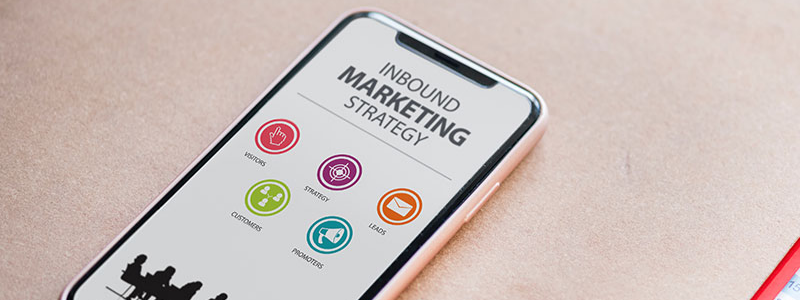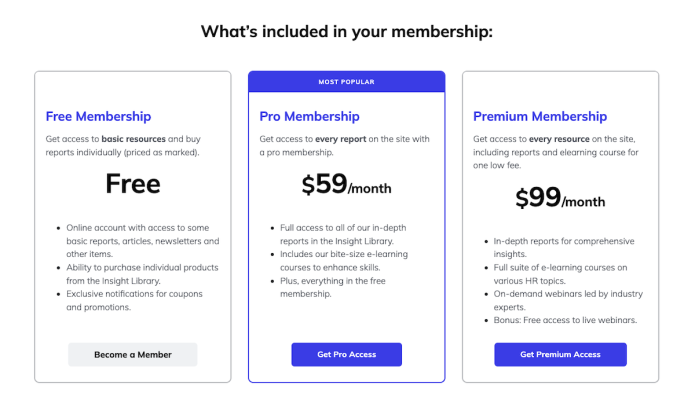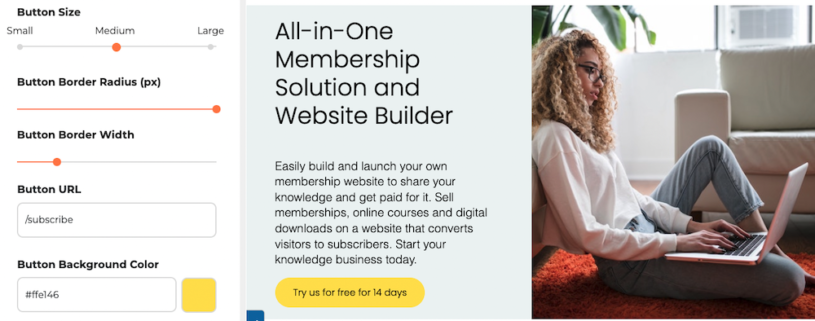
Email marketing is a is still considered the superpower of marketing tools for any business, but it can be especially effective if you’re running a membership website. Here are 6 ways to use email marketing to boost engagement and retention in your membership business.
Welcoming new members

An initial email to welcome new members is an opportunity to set expectations, provide important information, and get members excited about being a part of your community. More than a confirmation email, a welcome email gives you the opportunity to provide more information and an expanded welcome message, which often has the effect of feeling like a personal welcome from you, rather than a simple acknowledgement. Here are some tips for making the most of your welcome email:
Make it a personalized greeting: Who doesn’t like to read their own name on an email? Take this opportunity to begin by acknowledging that you know who you’re talking to, rather than just launching into your content with no salutation. Addressing the new member by name will help to establish a personal connection and make the email feel more engaging.
Provide an overview of the community: Provide new members with a brief overview of what your community is all about, including its mission, values, and key features. This should reiterate the information on your website so the member is reassured they have signed up for the right program.
Offer key resource information: Make sure new members know how to access any resources that are available to them as members. Your confirmation email will have let members know generally how to access membership content but don’t assume your member is willing to check back into that email. Your welcome email is a chance to give them everything they need to know to access the content they just signed up for.
Inform about upcoming events: If you have any upcoming events that new members can attend, include information on these in your welcome email. This will help to get new members excited about being a part of your community and provide them with an opportunity to connect with other members.
Include a call to action: Include one primary call to action in your welcome email. Try to avoid sending new members somewhere other than your website to start, such as to join a social media group. This might be confusing if it drops them into a group with other members at very different experience levels.
You're better off to promote your website with a call to action that takes them directly to the web page that is referenced in the link, whether it's a sign-up page for a welcome package, or a calendar page to book a call.
Provide a contact person: Whether it’s you or your assistant, make sure new members now where to reach out for help. If there are several different avenues, such as Facebook group, Messenger, a customer service email address or a contact form, include them all.
Regular Newsletter Updates

Regular newsletter updates keep your audience informed and engaged, especially if you can use images, videos, and infographics to make it more visually appealing. And newsletter content can be repurposed as social media content…or the other way around. Remember to keep your newsletter updates interesting, informative and engaging. Here are some specific content tips on how to make the most of regular newsletter updates.
Industry news: Lest this become a copy and pasted somewhat dry summary of an update from an industry source, be sure the headline is enticing. Which is more engaging: “New data suggests holistic medicine sales on the rise” OR “Learn how these 3 mavens in the spiritual healing space made six figures in their first year of business…”?
Company news: Keep your tribe informed of new services, new products or even a new business model you’re trying. Keep them not only informed, but involved. You’d be surprised how well members will respond to being included in new decisions you’re making about your business. Polls and surveys asking them what they think or better still, what services THEY would like to see in your business are a great way to keep members engaged and retained.
Customer success stories: Not only does this keep members reminded that they are making the right decision by starting with your membership, it also gives everyone a chance to shine. Offer your students or members an opportunity to be spotlighted in the newsletter.
Tips and advice: Everyone loves a listicle! But they also love a live interaction. Why not offer a “Hot Seat” opportunity to one or two members per month or per quarter? This takes tips to another level and everyone benefits. If you don’t want to create a specific event around it, simply turn your regular coaching or group session into a hot seat session, or tag it onto the end of your call instead of a Q & A.
Promotions & discounts: These should be offers that aren’t available to non-members, whether it’s the aforementioned Hot Seat opportunity or a discount on a new service you have decided to offer. Use seasonal opportunities like Black Friday, Valentine’s Day or simply the advent of spring to create your promotions.
Include a call to action: End every newsletter with a call to action, whether it’s a direction to something related to the content, or a generic link to your website.
Choose the right tech: This one has a tendency to trip people up. If you’re using the SubHub platform, you don’t necessarily need an email service provider to provide an opt-in opportunity and then send out newsletters. The opt-in banner layout is available to include in your homepage or landing pages (also provided within the platform).
The opt-in contacts are saved in the backend of your website, or can be directed to your Mailchimp list, or both. News can be easily imparted to all members, or even segmented by member group, through the Email Members option in the SubHub member manager.
Deliver targeted content

Segmentation in email marketing can be a huge boost to your overall marketing strategy. Most email marketing programs including Mailchimp offer the ability to segment your lists by various criteria, allowing you to send targeted campaigns to specific groups of members.
Design your segmentation
There are three most frequently used types of segmentation:
Buyer Persona:
Your “ideal client” might have more than one profile. Let’s say you’re a business coach. You might market to one buyer persona that is a new business owner, and another that is more seasoned. If you’re a lawyer, you might have different buyer personas for victims of personal injury and those at fault in an accident. Each of these buyer personas might have different problems, issues and have completely different questions about their situation.
Sales Cycle:
Visitors to your website may be at different stages of your sales cycle. They might be just trying to learn about your industry. They might be interested in your service but trying to find out more about you. Or they might already know all about you, love you, and are ready to buy from you. In each case, your message is likely to be different.
You can differentiate among those stages by offering different opt-in options on your website. For example, someone who opts in to receive a free e-book on a fundamental aspect of your service could be assumed to be a new visitor. Someone who opts in for a consultation would likely be more serious. They already know enough about you to want to talk. These types of website visitors could be segmented within your email program.
Member Group:
You may have your members segmented by group on your website. The SubHub platform offers unlimited member group options, so you can have members sign up for different levels of services, different types of services, and access to courses and content tailored specifically for each group. Now you have a couple of options for emailing each group:
- In the SubHub platform, simply go to your member manager and search by member group. Click the Email Members button to send out an email to everyone in the group.
- Use Mailchimp or another email service to have member group information automatically uploaded from your membership website subscription records to the same email list or separate lists.
Automate your segmentation
You can set up automated campaigns targeted to each list or list segment. For example, your first-time visitors might benefit from a short email tutorial series. Visitors who download a white paper, for example, might be interested in a series of emails containing testimonials, information about your company, and any new services you’re offering.
Test your segmentation
Be sure to send test emails to ensure the right messages are scheduled for the right segments. Then watch for results. Hopefully, by identifying your segments, targeting your messages and automating your delivery, your engagement will increase as will conversion rates. You will want to keep a close eye on analytics so you can tweak and refine your messages and segments as you grow.
Encourage engagement

Segmentation
We've already talked about segmentation, but it’s such an important technique, it bears mentioning again. How can you increase engagement using segmentation? Use data to segment into groups based on previous purchase history, abandoned carts, click through rates and even general interests if you have that information. What better way to encourage feedback than to send an email to specifically address the fact that someone got halfway through their purchase and then stopped for some reason?
There are a few ways to approach this conversation. You might want to just ask if they are still interested in the item. After all, it’s so easy to get distracted these days, you might be doing the person a favor by reminding them that the items is still available, and you can make it super convenient to finish the purchase by providing a link in your email to the shopping cart or payment processor. You can also ask for information about why they didn’t follow through. You may not get a response, but then again, you might find out something extremely valuable, whether it’s an undiscovered technical glitch, or the potential member simply changed their mind.
Personalization
Most email marketing programs make it easy to insert the persons first name in the salutation of the email. If you can personalize it further, that’s even better. For example, you might send an email to someone who purchased your new skin softener with a subject line of “How are you enjoying [insert name of skin softener]?” On the other hand, you might have members on your list who have never purchased from you, and in fact haven’t opened any of your emails for a while. Checking to make sure they still want to hear from you is a great way to encourage feedback. At the very least, you can slim down the size of your list, which might save some money the next time to send out your campaign.
Optimization
Use conversion rate optimization techniques to encourage clicking on a call to action. Some examples of conversion rate optimizations:
- Use an enticing headline. You want your headline to be intriguing but not a mystery. Say plainly but succinctly exactly what your message is about.
- Break up your text. No one wants to read paragraph after paragraph of text without a break. Use sub-heads to highlight the topic of each paragraph.
- Make sure your email is formatted correctly by sending yourself a test message. Sometimes formatting can be tricky because your readers are viewing the email using different email clients and in different browsers. But at least take a look at how you see it as a viewer, and that will give you a good idea of the user experience. For example, make sure that line spacing is appropriate, as is the amount of space between paragraphs.
- Avoid technical jargon. Unless you are speaking to a technical niche audience, try to avoid jargon and technical terms in your emails. It's not so much that they may not understand, but the fact is, people read all day for the most part, and your email will get best results if it's easy and quick to digest without your audience having to translate technical terms into layman's terms.
- Add images and/or a video to your emails. An email message that is visually appealing has a better chance of being read to the final call to action.
- Optimize your emails for mobile. The last thing you want is 5,000 recipients opening your email on their phone and only being able to see the left-hand side of the top banner message. All the elements of your email (images, videos, text and buttons) need to be responsive to desktop, laptop, tablet and phone screen sizes.
Win-Back Campaigns

Email marketing can be a powerful tool for winning back customers you've lost. By reaching out directly to past customers and offering them incentives to return, you can increase your chances of re-engaging with them and bringing them back to your business. Here are some tips for using email marketing to win back customers:
Identify
First you need to identify who these customers are. Search your list for those who have purchased from you previously but haven’t for a certain period of time. If you’re running a membership, this will be easy because their subscriptions will have expired or been cancelled. You may also want to include lost members who simply did not renew because of a lapsed credit card. It’s possible they just forgot. Your email might be just the reminder they were hoping for!
Calculate
Calculate the value of each client. You may already have worked out a cost to acquire a new clients vs. the cost to maintain one. What is the value of each customer to you over a period of time?
Incentivize
For prior customers who left simply because they didn’t see the value anymore, you may want to offer an incentive to give your service another try. A free trial, discount or bonus offerings could be just the incentive for your former client to become a current client again.
Follow up
Didn’t get a response the first time? Send your email again, or follow up with a new message. You can sweeten your offer, but just be sure to stay true to yourself. Make sure the time and effort you’re expending on winning back this customer is going to be worth it in the end, and doesn’t feel like you’re bombarding your client. Remember, you might know what your ideal clients need, but they might not know, or they simply might not be ready.
Analyze
Keep track of how many customers you're able to win back and what strategies are working best for you. Segment your list so that you have a separate segment containing only your win-back clients. You will likely want to address them with different messages than regular clients. This will help you optimize your campaign and improve your results over time.
Reminders and announcements

Here is a great chance to overtly sell products and services to your clientele. After all, they’ve already expressed interest in your work, and may have already purchased from you. From selling off older products and courses bundled at a discount, to announcing brand new exciting offerings to come, your newsletter is the perfect vehicle. Here are a few other ways to use reminders and announcements to stay in close touch with your current and prospective website members.
Event reminders
Whether it’s a live event, webinar, or in-person meeting, event reminders are crucial to maximizing the likelihood of good attendance. Most people forget what they signed up for, never mind the date and time. The good news is the vast majority of these kinds of reminders can be done on autopilot using various kinds of software. Most platforms offering webinars can be embedded into your website, and reminders go out automatically. If your event is in-person, you can use Eventbrite to set up reminders at certain intervals or even a few minutes before the event starts.
Product or service updates
If you’re running a membership website, it’s crucial that you keep your content updated. You can use email to automate reminders that new content is available on your website. If you are offering a new service, remember to let your tribe know. Tell them what’s new about it, how it differs from your current offerings, and what is the primary benefit to your client. Another service update that can be very effective is to remind potential buyers of your money-back guarantee. Your next new student, member or product buyer might be 90% convinced that your program is for them. But what about the 10%. You might be able to cover it with a 30 or 60-day money back guarantee.
Special occasion discounts and incentives
Whether it’s Black Friday or the 4th of July or anything in between, seasonal discounts are not only welcome but almost expected in most industries. You never know who on your list might be just hovering on the verge of buying from you, and that discount or free trial just seals the deal.
Surveys and polls
You’d be amazed at how willing people are to help you understand what they need. Don’t be afraid to send out surveys asking for feedback on your latest webinar or course. Polls can help you understand more about your community’s interests and values, which can help you craft future services and promotions. Let’s say you teach yoga online and you discover by poll that your students like a particular charity. Now you have a prize for your next draw or incentive.
Industry news
Sharing industry news and developments not only helps keep your readers up to date on the latest developments in their field, , but it also helps to position you as an industry influencer. If you are a trainer or coach, your students and clients are going to be interested in any new government regulations, particularly in the healthcare field. Technological advancements are also going to be of interest, including software or tools recently made available to professionals in your field. In addition to announcement s about events that you may be putting on, remember to let your clients know about industry events that they may not want to miss, or that you especially recommend.
Ready to get started on creating some awesome connections with your followers?
Start with a SubHub membership website. The framework and design templates are all included.






